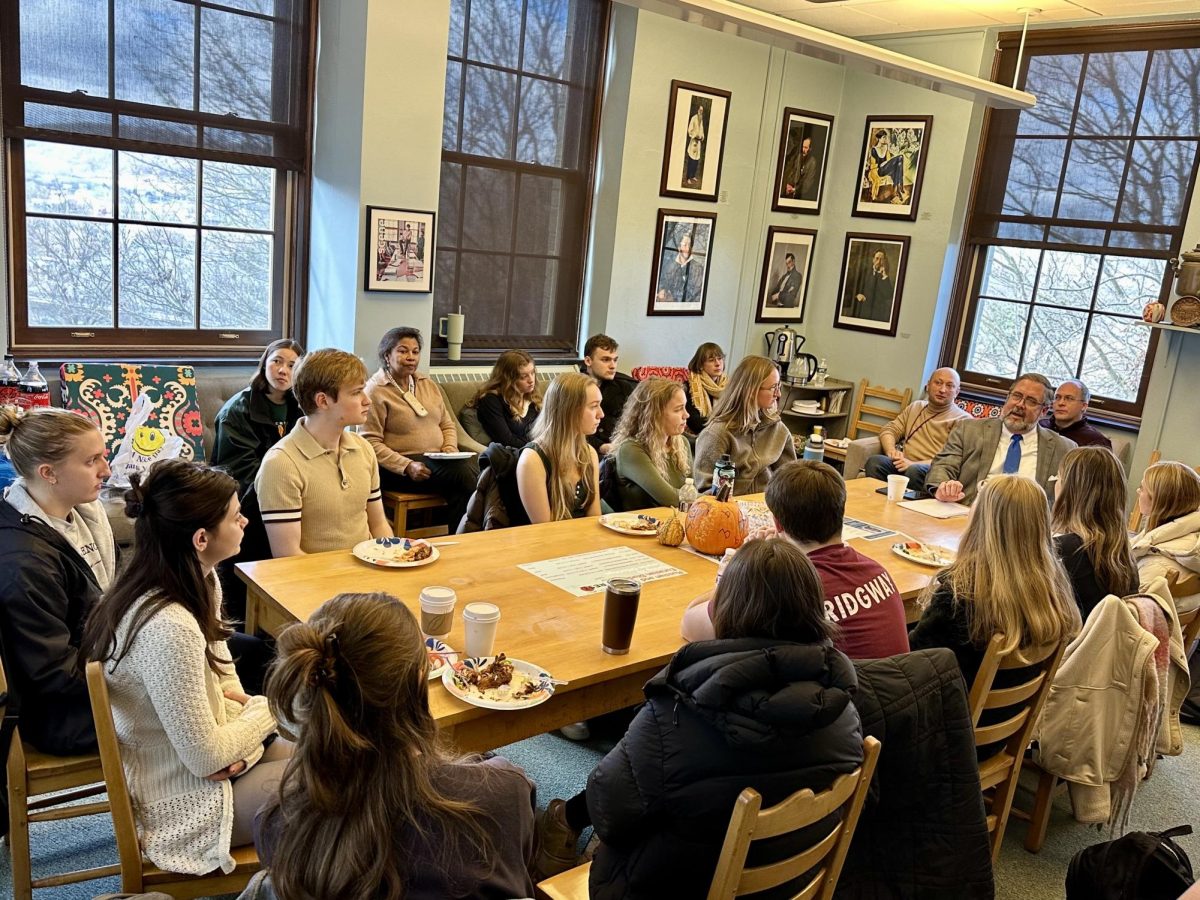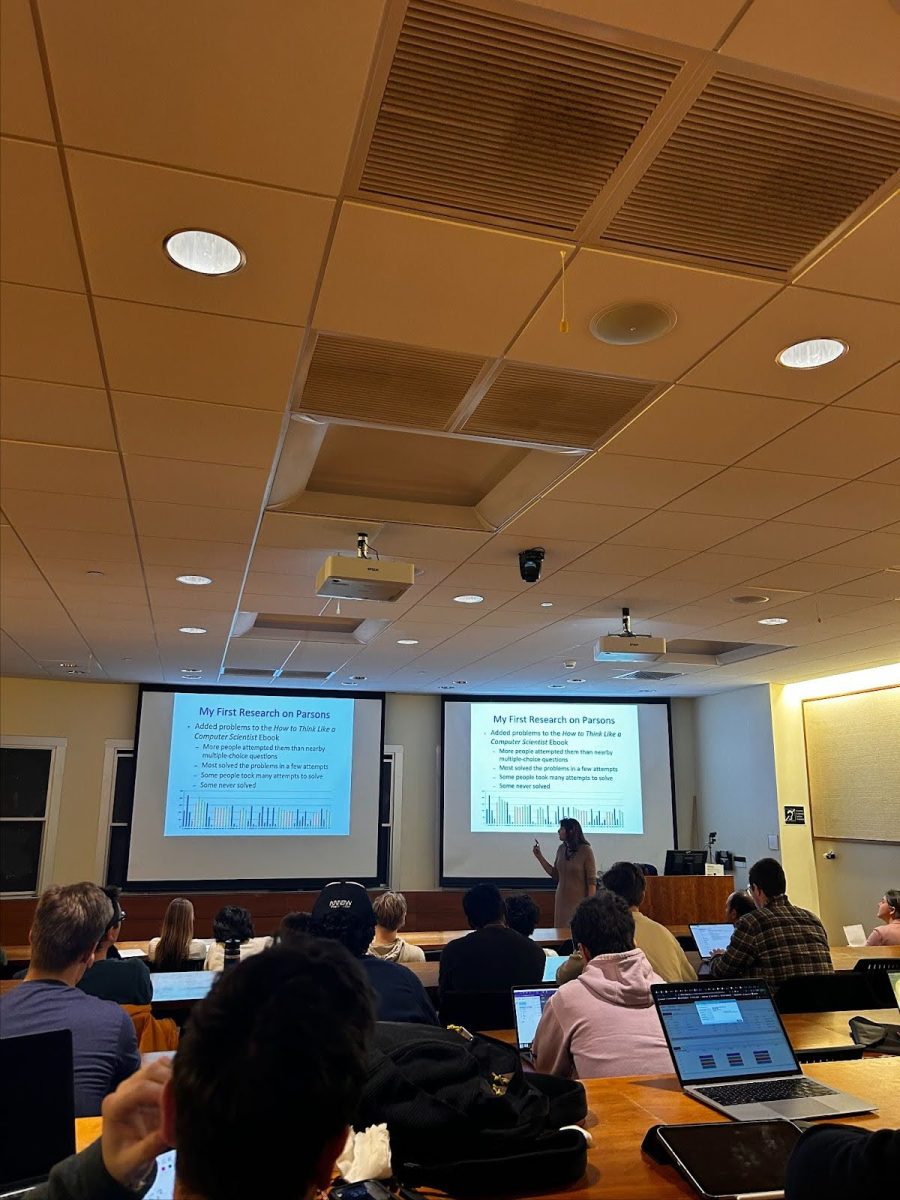Chinese artist Yang Hongwei gave a lecture about printmaking at the Colgate University Golden Auditorium in Little Hall on Nov. 13. His prints and other artwork are also on display at the neighboring Colgate Clifford Gallery. Yang has been a printmaker for over twenty years and has taught at the Central Academy of Fine Arts in Beijing, China.
The lecture started off with an introduction by Colgate Associate Professor of Art Margaretha Haughwout.
“Over the past ten years, Yang has been extending and expanding the vocabulary of woodcut and wood engraving and printmaking through his pixel analysis project, which combines Chinese and Western traditional wood engraving techniques,” Haughwout said. “Yang has exhibited in galleries and museums all over China and he’s been a visiting scholar at Columbia University, The National Academy of Art in Sofia, Bulgaria and The School of Visual Arts in New York City.”
Yang explained his pixel analysis techniques and projects, where he carved over one hundred thousand pear wood pixel blocks, each varying in color, size and shading.
“A finite set of elements [are] able to generate finite sets of images,” Haughwout said. “The prints Yang creates through the pixel analysis open up a shared language of art and technology that decode the foundations of art and image.”
When Yang first thought of the idea to use wooden pixels in his art, he bought six thousand kilograms of wood to start off. At first, he experimented with several methods to ensure the wood pixel blocks had the right colors and leveling, as well as addressing other complications related to uniformity.
“I could carve maybe twelve to twenty blocks a day, depending on how much wood I had to remove from each one,” Yang said.
Yang Hongwei introduced many of his previous installations and art pieces during his lecture, including several pixel forms of the Mona Lisa, arranged on a display wall ranging from very pixelated to decreasing in pixel quantity, making the figure increasingly harder to see. Another artwork he discusses was titled “Memorial,” where he created a block statue out of smaller pixel blocks.
In addition, Yang showed pictures of an exhibit he produced in China.
“[This] was an interactive exhibit that I set up in Beijing; an installation, which moved my studio into the museum where people could come in and see […] all the blocks that I created; that’s my archive of blocks, with printing equipment in the middle and the visitors could come in and assemble blocks to make their own prints,” Yang said.
Yang has become known in the art world for his unique use of wooden blocks to create pixelated art work. In addition, many of his pieces utilize color theory to display multiple images at a time based on the lighting. Some of his pieces also showed different images in black and white than when viewed in color, which left many of the audience members amused and interested.
Lastly, Yang discussed his method of using mirrors and magnets to make art, where he angles the mirrors in order to use shading to create an image.
“You can use this method to connect with Buddhism,” Hongwei said. “The idea of the presence and the absence of light through the mirrors.”
Hongwei is a native Chinese speaker, and had a translator communicate his lecture into English.
Senior Rachel Plasky commented on seeing this process.
“It was interesting to see a presentation get translated in real time,” Plasky said.












